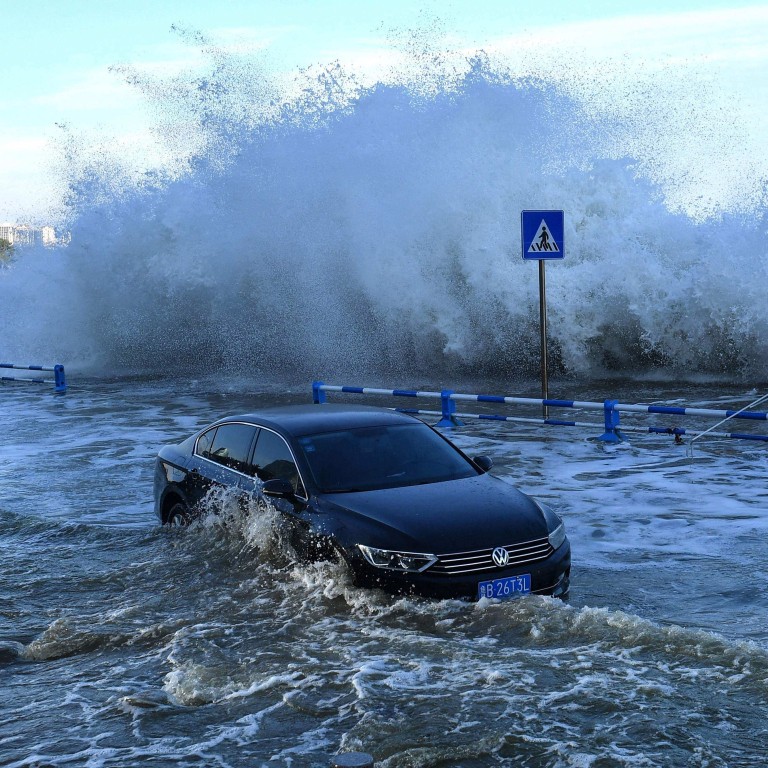
Yale professor calls for more research on carbon capture, cutting solar radiation to reduce impact of climate change
- Extreme weather events caused by global warming are not expected to fall after net zero emission is achieved, according to Yale professor Wake Smith
- Global average temperature has already risen 1.1 degrees from pre-industrial levels, and world leaders have pledged to contain it below 2 degrees by 2100 to avert disastrous consequences
Sea levels are expected to continue rising for centuries, since polar ice sheets will keep melting due to warmer seas caused by excessive carbon emissions from the past century, said Smith, who is also a senior fellow at Harvard Kennedy School.
“The general belief seems to be that once we stop emitting, the problem is solved and the climate is saved,” he said in his new book Pandora’s Toolbox. “They are therefore both surprised and horrified to learn that for centuries thereafter, the seas will keep rising, the heatwaves will keep coming and the ecosystems will keep dying.”
Depending on the magnitude and duration of global warming overshooting the 1.5 degrees Celsius target, some impact on ecosystems will be “irreversible” even if global warming is reduced, the United Nation’s Intergovernmental Panel on Climate Change said in a report in February.
The global average temperature has already risen 1.1 degrees from pre-industrial levels, and world leaders have pledged to contain it at well below 2 degrees by 2100 to avert disastrous consequences.
Chinese manufacturers lack plan on carbon emissions without firm targets
The world’s sea levels may rise by 60cm by 2100, as warming seas expand in volume, based on the IPCC’s “best estimate”. The possibility of a 2 metre rise in sea levels by 2100 and 5 metres by 2150 in the “very high” emissions scenario “cannot be ruled out” if ice sheets melt at a faster rate, the IPCC said.
The impact of Ukraine’s invasion by Russia has shown why achieving the global ambition of net zero emission by mid-century is challenging, Smith said.
“All the rosy net zero-by-mid-century projections assume the whole world works together seamlessly, and [considers] decarbonisation of the energy system as the top priority,” he said. “What the Ukraine invasion demonstrates is the fallacy of both assumptions.”
Governments and businesses should step up support for research to reduce the costs of technology for capturing carbon dioxide and storing it underground, besides know-how for reflecting solar radiation to cool the Earth, Smith said.
Such efforts have barely started.
In Iceland, Swiss start-up Climeworks last September launched a direct carbon capture and storage plant with an annual capacity of 4,000 tonnes. That is a drop in the ocean compared to global emissions of 32 billion tonnes of carbon dioxide in 2020.
To fund capacity expansion, it raised some US$650 million from a round of equity fundraising in April from investors including Singapore sovereign fund GIC, Swiss Re and London-based M&G.
Later this year, Canada-based Carbon Engineering and partner 1PointFive aim to start building a direct capture and storage facility in southwestern United States with a capacity of one million tonnes per year. It is expected to be the world’s largest such facility when it comes on stream in 2024.
A proposed technology to cool the Earth by deploying hundreds of aircraft to spray a sunlight-reflecting calcium carbonate aerosol is “cheap and easy”, but carries the risk of affecting weather patterns that have yet to be fully understood by scientists, Smith said.
A Harvard University project expected to cost US$20 million was launched five years ago, but no companies have come forward to finance the technology.



